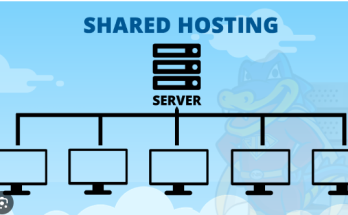I. Introduction to Web Hosting
A. Definition and Importance B. How Web Hosting Works C. Types of Web Hosting Services 1. Shared Hosting 2. VPS (Virtual Private Server) Hosting 3. Dedicated Server Hosting 4. Cloud Hosting 5. Managed WordPress Hosting
II. Factors to Consider When Choosing a Web Host
A. Performance and Reliability B. Server Resources and Scalability C. Security Features D. Customer Support E. Pricing and Value
III. Types of Websites and Their Suitable Hosting Solutions
A. Blogging Websites B. E-commerce Websites C. Business Websites D. Portfolio Websites E. Forums and Community Websites
IV. Detailed Comparison of Leading Web Hosting Providers
A. Features, Pricing, and Plans B. Pros and Cons C. User Reviews and Ratings
V. Steps to Selecting the Best Web Hosting Service
A. Assessing Your Website’s Needs B. Researching Potential Hosting Providers C. Comparing Hosting Plans D. Reading Reviews and Gathering Feedback E. Making an Informed Decision
VI. Setting Up and Managing Your Web Hosting Account
A. Registering a Domain Name B. Configuring DNS Settings C. Uploading and Managing Files D. Installing Content Management Systems (CMS) E. Monitoring Website Performance
VII. Advanced Features and Tools Offered by Hosting Providers
A. SSL Certificates and Security Measures B. Backup and Restore Options C. Email Hosting and Management D. Website Builders and Templates E. Additional Services and Add-ons
VIII. Tips for Optimizing Website Performance on Your Chosen Host
A. Content Optimization B. Regular Updates and Maintenance C. Utilizing Caching and CDNs (Content Delivery Networks) D. Monitoring Website Analytics E. Managing Traffic Surges
IX. Common Issues and Troubleshooting Techniques
A. Downtime and Uptime Monitoring B. Dealing with Security Breaches C. Handling Technical Glitches D. Seeking Support and Assistance
X. Future Trends in Web Hosting
A. Emerging Technologies and Innovations B. Impact of AI and Automation C. Environmental Sustainability Efforts
XI. Conclusion
A. Recap of Key Points B. Final Recommendations C. Encouragement to Begin or Improve Your Hosting Journey
Title: A Comprehensive Guide to Understanding Web Hosting: From Basics to Advanced
In the world of the internet, where websites are the storefronts of businesses and the platforms for personal expression, understanding web hosting is crucial. Web hosting forms the backbone of every website, determining its accessibility, speed, and security. Whether you’re a beginner or seeking advanced knowledge, this guide will walk you through everything you need to know about web hosting, step by step.
1. Understanding Web Hosting: An Overview
Web hosting refers to the service that allows individuals or organizations to post a website or web page onto the Internet. It involves storing website files and data on a server connected to the internet, enabling visitors to access these files via a web browser. Key components include:
- Servers: These powerful computers store website data and make it accessible online.
- Storage: Disk space allocated for storing website files, images, databases, and other content.
- Bandwidth: The amount of data transferred between the server and visitors accessing the website.
2. Types of Web Hosting
There are various types of web hosting, each catering to different needs and budgets:
Shared Hosting: Ideal for beginners, where multiple websites share resources on a single server, making it cost-effective but with limited performance.
Virtual Private Server (VPS) Hosting: Offers dedicated resources within a shared environment, providing more control and scalability.
Dedicated Server Hosting: Entire servers are dedicated to a single website, providing maximum control, performance, and customization but at a higher cost.
Cloud Hosting: Utilizes multiple servers in a network to balance the load and ensure uptime, offering scalability and reliability.
Managed WordPress Hosting: Tailored specifically for WordPress websites, providing optimized performance, security, and support.
3. Choosing the Right Web Hosting Provider
Selecting a reliable hosting provider is crucial for the success of your website. Consider the following factors:
Uptime and Reliability: Look for providers offering 99.9% uptime to ensure your website is accessible round the clock.
Customer Support: 24/7 technical support is essential for resolving issues promptly.
Scalability: Ensure the hosting plan allows for scalability as your website grows.
Security Features: Features like SSL certificates, regular backups, and malware protection are essential for website security.
Price and Plans: Compare different hosting plans to find one that fits your budget and requirements.
4. Setting Up Your Hosting Account
Once you’ve chosen a hosting provider, follow these steps to set up your hosting account:
Domain Registration: Register a domain name or transfer an existing one to your hosting provider.
Choose a Hosting Plan: Select a suitable hosting plan based on your website’s needs.
Complete the Payment Process: Pay for your hosting plan and wait for confirmation.
Accessing Control Panel: Log in to your hosting account’s control panel to manage settings and install applications.
5. Installing and Managing Your Website
After setting up your hosting account, proceed with these steps to launch your website:
Website Platform Installation: Install your desired Content Management System (CMS) like WordPress, Joomla, or Drupal.
Customize Settings: Configure website settings, themes, and plugins to personalize your site.
Uploading Content: Add content such as text, images, videos, and other media to your website.
Regular Maintenance: Perform regular updates, backups, and security checks to keep your site running smoothly.
6. Optimizing Website Performance
Optimizing your website ensures better user experience and search engine rankings:
Speed Optimization: Use caching, content delivery networks (CDNs), and optimize images to improve site loading speed.
Mobile Responsiveness: Ensure your website is mobile-friendly for users accessing it from various devices.
SEO Strategies: Implement SEO techniques like keyword optimization, meta tags, and quality content to improve visibility.
Monitoring and Analytics: Use tools like Google Analytics to track website performance and visitor behavior.
7. Conclusion
Understanding web hosting is fundamental for anyone aiming to establish an online presence. From selecting the right hosting type to optimizing website performance, each step contributes to a successful online journey. Remember, continuous learning and adaptation are key in the ever-evolving landscape of web hosting and website management.
Title: The Complete Guide to Web Hosting: Choosing, Understanding, and Optimizing
Introduction (150 words): Web hosting is the foundation of every successful website, acting as the digital space where your site resides. Choosing the right hosting service can significantly impact your site’s performance, security, and user experience. This comprehensive guide will walk you through the crucial aspects of web hosting, from understanding different types of hosting to selecting the perfect option for your needs.
Section 1: Understanding Web Hosting (400 words)
- What is Web Hosting?: Define web hosting and its significance.
- Types of Web Hosting: Explore shared, VPS, dedicated, cloud, and managed hosting.
- Key Features to Consider: Bandwidth, storage, uptime, scalability, security, and support.
Section 2: Choosing the Right Web Hosting (600 words)
- Assessing Your Needs: Identify your website’s requirements in terms of traffic, resources, and scalability.
- Comparing Hosting Providers: Review popular hosting providers and their offerings.
- Factors to Consider: Price, reliability, customer support, server location, and add-on features.
Section 3: Setting Up Your Hosting (400 words)
- Registering a Domain: Steps to choose and register a domain name.
- Configuring Hosting Account: Guidance on setting up your hosting account, including DNS settings.
- Installing a CMS (Content Management System): Instructions on installing WordPress, Drupal, or other CMS options.
Section 4: Managing and Optimizing Hosting (500 words)
- Monitoring Performance: Tools and techniques to monitor site performance and uptime.
- Optimizing for Speed: Tips for improving website speed through caching, CDN, and server optimizations.
- Security Measures: Implementing SSL, regular backups, and other security measures.
Section 5: Troubleshooting Common Issues (350 words)
- Common Hosting Problems: Addressing issues like downtime, slow loading, or security breaches.
- Troubleshooting Steps: Guide to diagnose and resolve hosting-related problems.
- When to Contact Support: Recognizing when issues require professional assistance.
Conclusion (100 words): Choosing the right web hosting service is pivotal for the success of your website. By understanding the types, features, and optimization strategies, you can ensure a seamless online presence for your audience.
Additional Tips and Resources (100 words): Explore advanced hosting configurations, follow industry blogs, and keep your hosting optimized with regular checks and updates.



